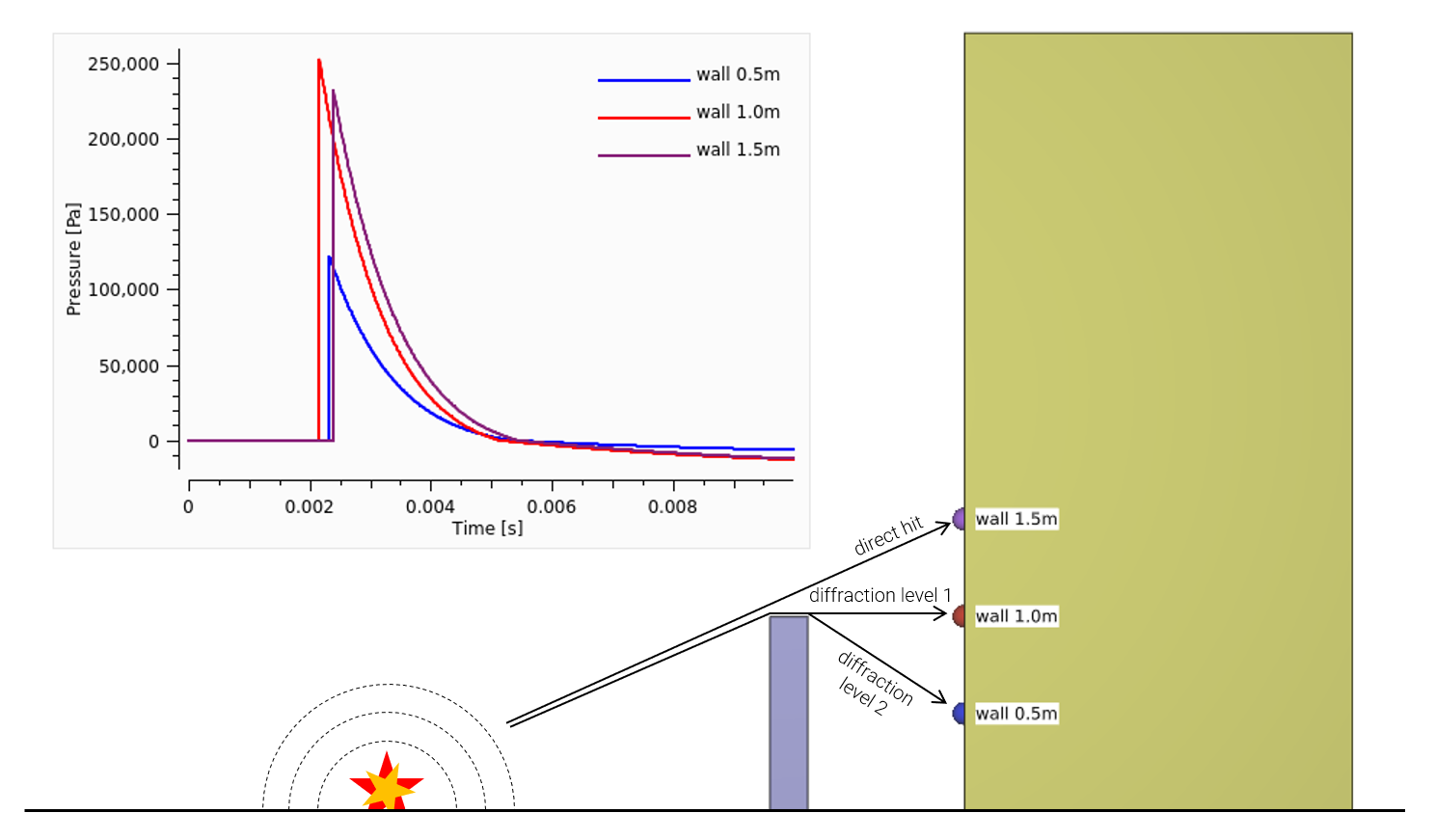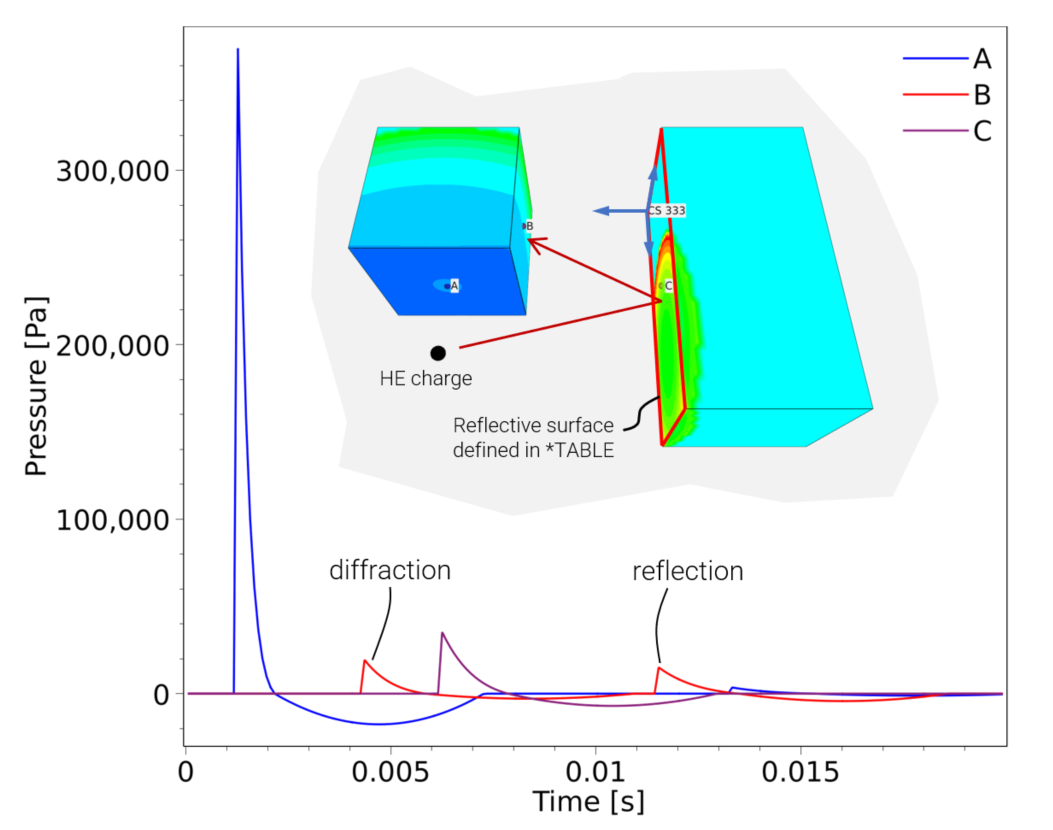LOAD_AIR_BLAST
Loads
"Optional title"
coid
entype, enid, $mtnt$, $x_c$, $y_c$, $z_c$, tid, diffract
toff, ground, $t_{end}$
Parameter definition
Description
This command is used to define an air blast load from a spherical charge. It is based on semi-empirical equations according to Kingery-Bulmash. The implementation includes options to account for diffraction and ground reflections.
There is also an option that allows for reflections against rectangular surfaces. These surfaces need to be defined in a separate TABLE. An example is included below. (The reason for not working directly with reflections against the Finite Element mesh is to prevent unwanted effects from local geometrical features.)
Example
Blast loaded wall
This examples displays the effect of diffraction. Two of the sensors are not in the direct line of sight from the explosive charge. By activating the diffraction option, the blast wave travels around the obstacle edges and eventually reaches the initially shielded sensors.

Reflection
In this example a reflective surface is defined. The pressure wave against the wall of sensor C reflects and hits the wall where sensor B is located. Sensor B registers two pressure signals, the first due to diffraction around the corner of the face where sensor A is located. The second peak is from the reflected wave.

